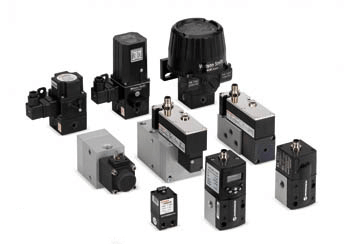

When it comes to handling compressed air and pneumatic equipment, safety is paramount. Because this energy-efficient power source can be a danger to personnel and machinery if not managed carefully. Here, Fluid Controls explores how manufacturers can maintain pneumatic safety standards by following regulations and adopting certain measures.
Compressed air has the potential to be hazardous to both personnel and equipment. Therefore, various pneumatic regulations apply to employers and manufacturers to ensure the highest safety standards are maintained in the workplace and the manufacture of pneumatic equipment.
The following is a sample selection of just some of the applicable pneumatic safety standards in the UK:
Some of the most common and costly pneumatic system hazards include, but are not limited to, the following:
When designing a safe and effective pneumatic system, there are some key safety precautions to bear in mind that can help mitigate some common safety hazards associated with pneumatic applications.
One of the most crucial safety measures of any pneumatic system is to prevent any unplanned, accidental start-up of machinery. This is commonly achieved using a purpose-built pneumatic safety valve. A solenoid valve with a single valve element is typically ample for a PLC-based system, whereas more complex setups may require more complex valves with redundant valve elements.
It is not uncommon for an unscheduled start-up to coincide with an exhausting or dumping of air pressure. For that reason, numerous safety-minded components now mitigate against both occurrences. For instance, in the event of a failure, pressure supply valves are designed to reduce the likelihood of over-pressuring within the system while simultaneously exhausting air pressure in a safe and controlled manner.
Whilst it may sound obvious, ensuring you can simply reduce the speed is one of the simplest and most effective safety options available when designing a pneumatic system. This can be achieved by integrating a few simple flow controls, which should ideally be fitted with tamper-proof locks to prevent deviation from the set parameters.
Another key safety measure for pneumatic systems is stopping, blocking or holding the equipment as required. This safety function can be achieved in several ways, depending on the system configuration. For instance, a check valve could be installed in the cylinder port to hold the load. Another example is to add a mechanical brake to the cylinder’s piston rod by way of a valve and spring pressure to clamp it into position.
In simpler pneumatic systems, cylinder movement can be achieved with a spring-return solenoid valve. However, more complex setups might benefit from a more durable option, like a servo-pneumatic valve, which interfaces with a sensor that determines the position of the valve elements and relays this data to a PLC. This, in turn, prevents the cylinder from extending unless the valve elements move.
Your safety and that of your personnel, machinery and plant are paramount to us here at Fluid Controls. As one of the UK’s leading distributors of pressure control products, we can supply a vast range of control solutions and pressure control equipment to safeguard your pneumatic systems. We have one of the world’s largest ranges of compressed air and pneumatic products from manufacturing giants, IMI Norgren.
Specialists in pressure management, Fluid Controls supplies an extensive selection of pressure control equipment to a broad range of industries, including the automotive, chemical, process, power generation and semiconductor sectors. As a fully accredited ISO9001:2015 company, we’ve made a strong commitment to quality, exemplified by our added-value services, including full technical back-up, in-house or on-site product training, installation and servicing, pressure testing and repairs, and safety at work training.
From pneumatic safety valves to flow control valves, pressure switches, actuators and pneumatic fittings, we’re sure to have the perfect safety-conscious components for you to maintain optimal pneumatic safety standards at all times. For more information about our vast range of products or to discuss your application in more detail, please contact Fluid Controls on +44 (0)118 970 2060 or email fluid@fluidcontrols.co.uk.